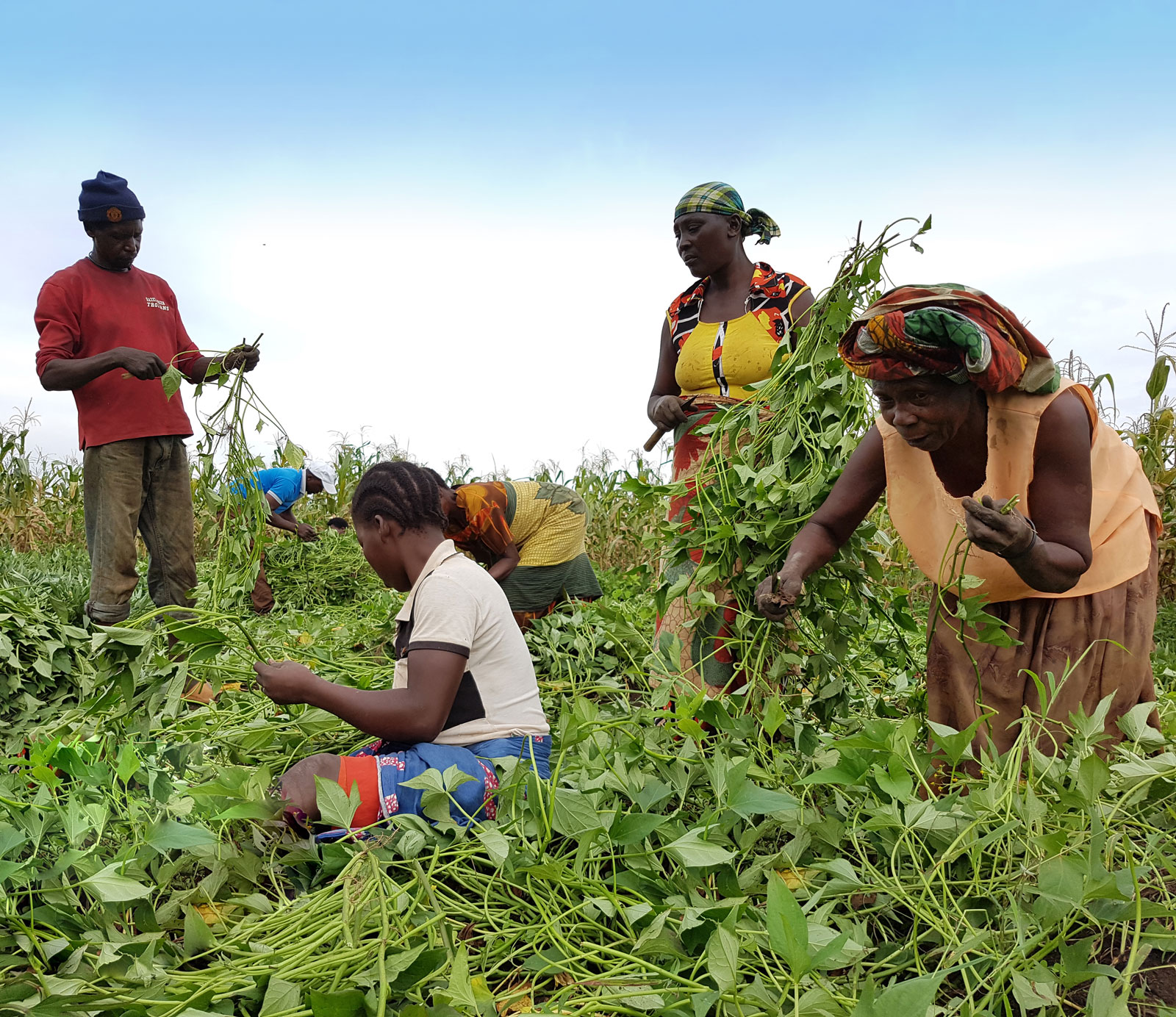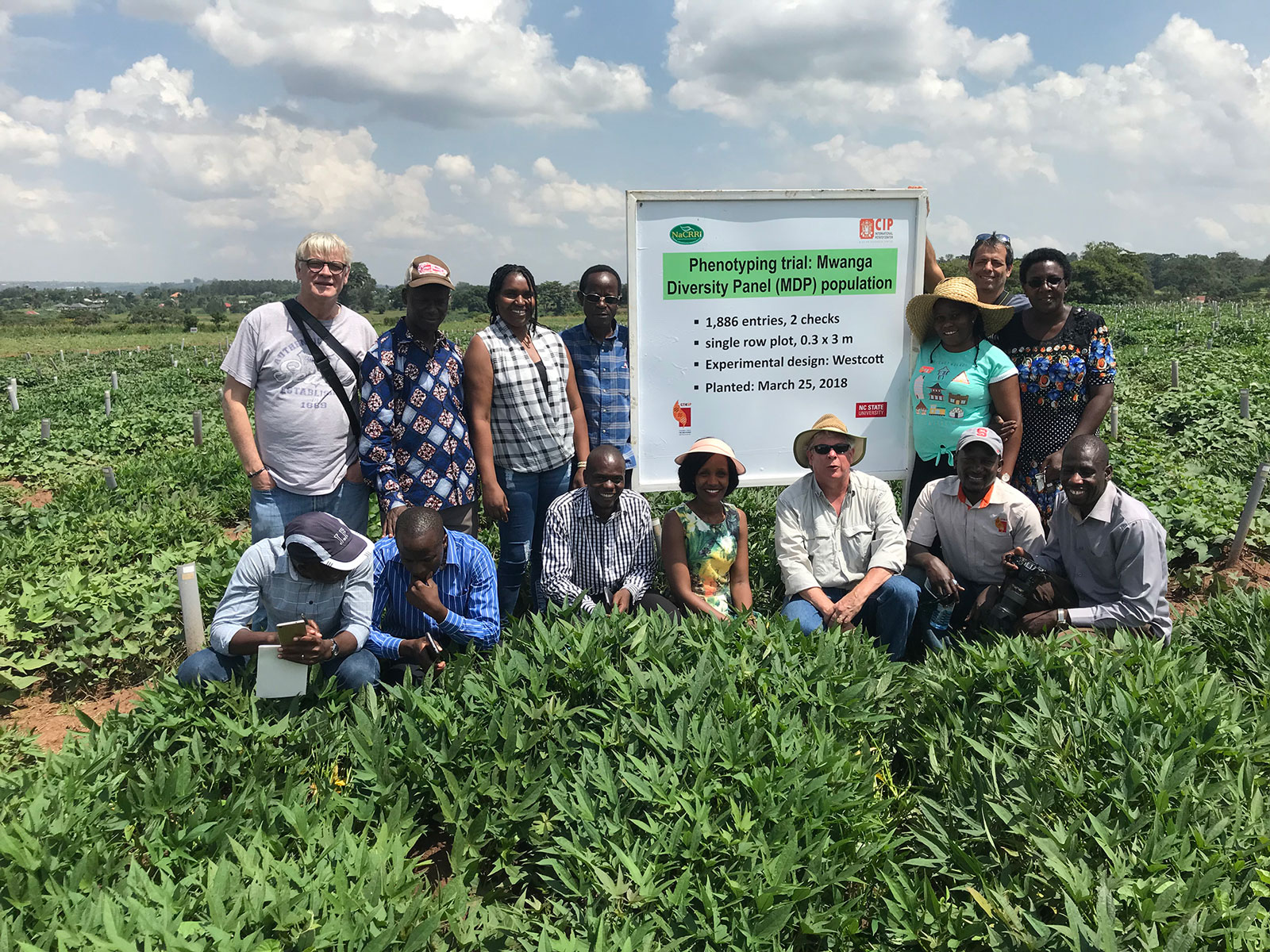
OFSP (orange-fleshed sweetpotato) varieties are often percieved as “watery” and rejected by African consumers,who prefer a dry, starchy sweetpotato.This is unfortunate, as OFSP is rich in beta-carotene, which our bodies use to make vitamin A. For years, researchers have suspected that there was a negative link between the genes involved in producing starch and beta-carotene. Previous breeding efforts concentrated on selecting high-yielding clones with lots of beta-carotene (i.e. dark orange roots) by crossing parents with high beta-carotene with adapted, high starch content parents. However, because of the negative genetic association, these efforts resulted in biofortified sweetpotato varieties that were low in starch.
Recent work by RTB geneticists shows that the genes for starch and beta-carotene are more closely linked than had been suspected, which will make them more difficult to separate. By crossing an OFSP with a white-fleshed sweetpotato, and mapping the genes of their offspring, the RTB team demonstrated that the two genes involved in starch and in beta-carotene synthesis are located near each other on the sweetpotato genome. One of these genes, phytoene synthase (PSY), is involved in beta-carotene synthesis, while the other, sucrose synthase (SuSy), has to do with making starch.
A third gene, called Orange, is on a different region of the genome, but it acts with the PSY and SuSY genes to inhibit starch production while making more beta-carotene (or vice versa). As a further twist, Orange and PSY act together to influence the production of either starch or beta-carotene, so that more of one means less of the other.

The negative association between the genes for starch and beta-carotene complicates breeding for these traits in a single sweetpotato variety. “It has been frustrating at times, but now that we understand more about how these three genes work, and where they are located, this will help breeders to design genome-assisted breeding approaches to create OFSP with more starch, and greater public acceptance,” says Dorcus Gemenet, a molecular geneticist previously at CIP in Kenya.
Besides starch and vitamin A, farmers also want sweetpotatoes that yield more. When farmers harvest sweetpotatoes to eat at home, they usually just dig up a few roots at a time. The mature roots are removed from the plant and the immature ones are left in the soil to continue growing. Sweetpotato roots that keep growing even after the plant has reached maturity, are said to have “continuous storage root formation and bulking,” a trait that results in higher yields and a longer harvest time.
Recent RTB work with genome-wide association (GWAS) identified 34 genes associated with continuous storage root formation and bulking. Another seven were involved in the opposite trait of discontinuous root formation and bulking (the roots stop growing when the plant reaches maturity). Now that geneticists have mapped the locations of the genes involved in root growth, it will be easier to select for them early on in breeding efforts.
Except for cassava, other root, tuber and banana crops are polyploid; they have more than two sets of chromosomes. This complexity can make the crops difficult to breed, so advanced bioinformatic tools have been developed for carrying out genomic analysis in the polyploid sweetpotato. “Mapping these candidate genes for sweetpotato will also be useful for other polyploid crops,” explains Astére Barayenya at Makerere University, who collaborated on the work with scientists at CIP, ILRI and other partners. “We hope that our work with sweetpotato genomics will shed light on more efficient ways to breed other vegetatively propagated crops.”


SHARE THIS

